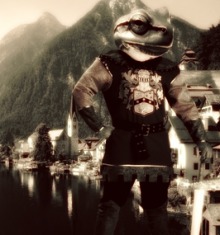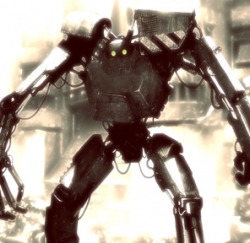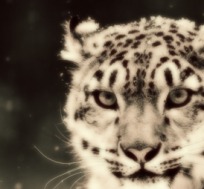Races of Winter’s Oasis
Human

Your average human, found in nearly every corner of the known world. Physically underwhelming compared to the anthropomorphic Pasu-Abhasa, humans are nonetheless clever and hardy enough to thrive in all of Loka’s climates.
They are critical in the history of contemporary Loka, as they are more prone to producing, using, and assimilating both Lokan and Svargan technology. And while the Pasu are also liable to produce offspring with rough magical qualities, humans are more likely to be able to control and hone it to the degree that is required of the Cela monks of Cetayanti, although there have been many instances of Pasu Cela.
Humans come in all the varieties you would expect: short, tall, pale, dark, scrawny, muscular.
Anthropomorph (Pasu) — Mammal
Due to their versatility and survival prowess, mammal Pasu are the most common inhabitants of Loka. They are usually stronger and faster than humans, but not many of them are as adept with technology as their society counterparts. Some stories say that the Pasu were created by the Svargans as weapons of war, but more traditionally-minded Pasu Elders maintain that they have always been here, the children of the gods of nature.
Pasu are almost invariably humanoid in shape, in the same size and musculature size range as humans, and their facial features and foot grade vary from bloodline to bloodline, though they most often have almost entirely bestial faces and are famed for reverting to quadropedal running when moving at high speed.
Anthropomorph (Pasu) — Others

Amphibians
Pasu of amphibian lineage usually come from Meson, Gilead, Esquemelin, or Noria, where water and technology are both abundant, and they are considerably less prevalent than either humans or mammal Pasu. Due to their intelligence and diminutive bodies, they are more accustomed to dealing with both Svargan and Lokan technology, and though they are just as likely as mammals to develop magical abilities, the few hydrophile Pasu who learn the ways of magic find a deeper capacity for honing it to legendary levels.
Hydrophilic Pasu vary wildly in size from clan to clan. The Frog clan, the ‘Calaveras’, are short and stocky, as one might expect, but the ‘Svarog’, the Salamander clan, usually average human height and are thin and lithe.
Reptilians
Those Pasu of scales, spines, and shells usually hail from drier climates, such as the peaceful “Ao Qin” seclusion cult of the south mountains or the desert-dwelling bandits “Azi Dahaka”, both of whom traditionally fancy themselves as dragons because of a predilection for developing the magical skill of manipulating fire, although none of them possess the capacity for flight. Their appearances are not as defined as the other Pasu because of their promiscuous interbreeding, giving them very generalized characteristics.
On average, reptilian Pasu are covered in tough scales and are usually tall and muscular, with dull spines that grow in hairlike formations and frighteningly sinister features. Their homogenous appearances aside, they display brilliant skin colors in every shade of the rainbow, and even vary hue from parent to offspring because of mixed lineages.
Avians
Avian Pasu are rare, and come only from the numerous “Tseiqami” clan, a village high in the cliffs of Mt. Erebus. Mysterious and furtive, the mystical Tseiqami send down their adolescents as a form of coming-of-age rite to prove themselves in the world, mirroring the nesting instinct of their wildlife counterparts. Avian Pasu very rarely produce offspring with the ability to do more than glide at a shallow angle; while their plumage and features may vary between lineages, the Tseiqami generally have underdeveloped wings in comparison to wild birds.
Because of their skeletal structure, Tseiqami often only wear enough clothes to preserve modesty. Their arms are long enough to reach the knee at a standing position, with long fingers and angular elbows that support great fans of primary feathers; these semi-vestigial wings extend backwards from the forearm and fold along the upper arm when not in use. Swift and sharp-eyed, Tseiqami adolescents are often employed as messengers or inducted into the Viramarga as marksmen.
Automaton

Golems (Restricted Type)
Automaton characters are not currently being considered for application. If and when automaton character applications open again, automatons will only available to players who have a strong record of positive contribution to the game over six months time, at the discretion of the staff.
Mechanical Automatons are occasionally seen milling about. These rare, restored mechanical persons remnants of Svarga ‘living’ among the people of Loka today. Most of them are missing this or that piece, and have a good probability of breaking down, but they often have the strength comparable, and sometimes greater than, fierce Arcto warriors. Getting them to work in the first place tends to be more luck than anything, and often they have at least a little knowledge of how to repair themselves just enough to keep moving.
